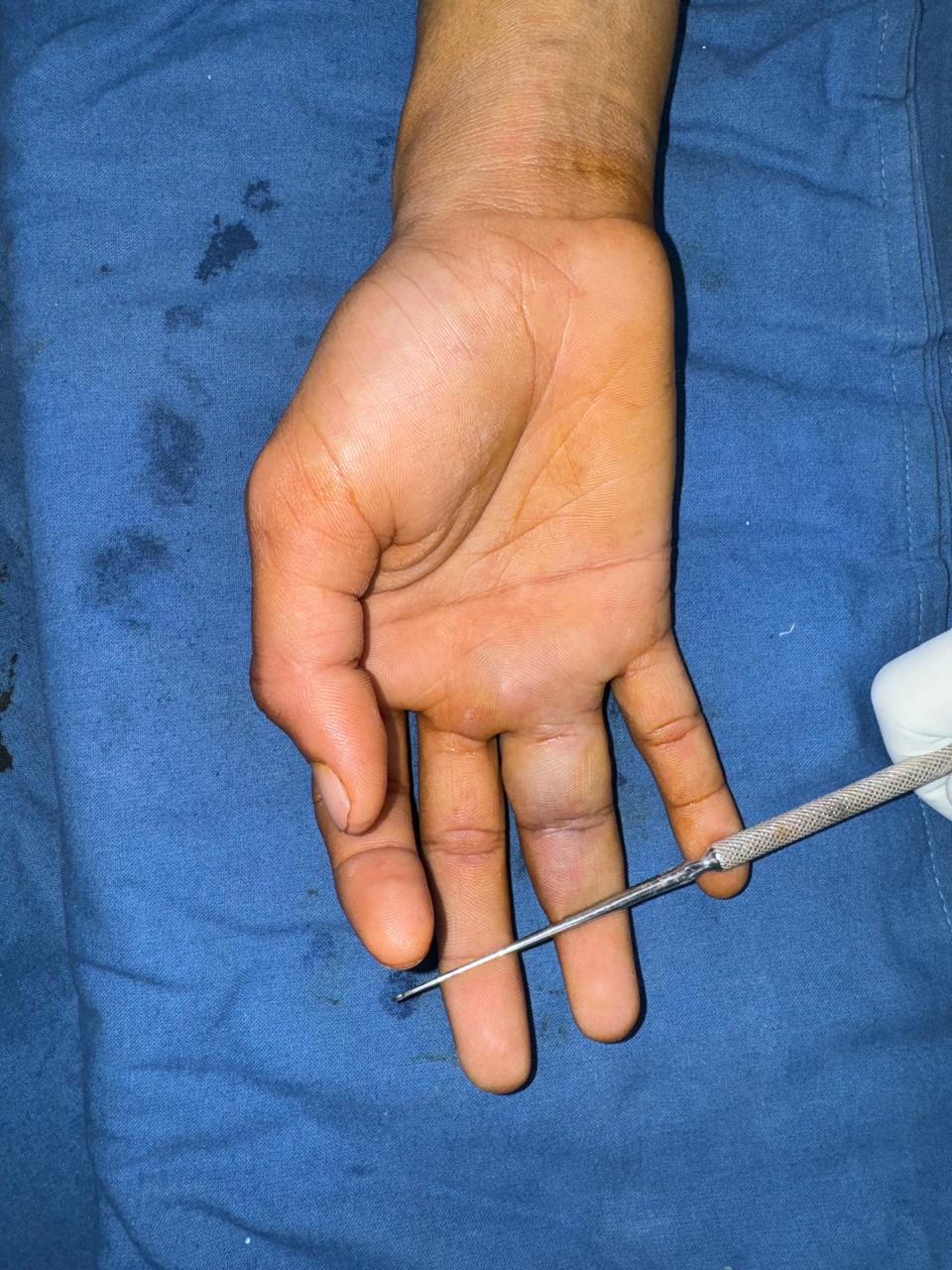This particular case involved a girl in her late teens who came to me with her father, seeking help for a bluish discoloration of the ring finger on her right hand—a condition she had lived with since early childhood. Logic might suggest that health concerns should be addressed as soon as they appear, but reality often tells a different story. Whether it’s the fear of medical procedures or a hopeful belief that time will heal all, I frequently encounter cases where patients delay seeking treatment. This was one such instance, and it underscored how important it is to approach every case with empathy and a readiness to address long-standing issues
Now, let’s dive into some technical details. Upon examining her clinically and reviewing her MRI and other reports, I diagnosed her condition as a slow-growing vascular malformation, most likely a hemangioma. Treating this type of case is anything but straightforward—it’s a risky procedure with significant challenges.
As doctors, our ultimate aim is always to achieve the best outcomes, but the truth is, we can’t always guarantee them. In this case, the malformation was entwined with the neurovascular bundle and surrounding tissues, making complete excision potentially impossible. There was also a remote but real risk of finger loosing its blood supply and eventually losing the finger altogether. While patients often perceive these warnings as routine, the risks are very real. For surgeons, the delicate balance between ensuring the best possible outcome and preventing worst-case scenarios is what makes this work so compelling—and, admittedly, nerve-wracking. It’s this intersection of precision, uncertainty, and responsibility that defines the art and science of surgery
We prepared the patient for surgery with the necessary investigations, premedication, and consent. Once in the operating room, our anesthetist administered a supraclavicular regional block to ensure effective analgesia and temporary paralysis of a sort. The surgical area was prepped and draped, and a tourniquet was applied to create a bloodless field—though, paradoxically, this is more of a surgery dealing with blood vessels and small pools of blood(sinuses),to be specific and one needs to see the vessels feeding the lesion.
A zigzag incision was made along the palmar side of the finger to explore the lesion. I often marvel at how medical techniques evolve. How did someone figure out that a zigzag incision is not only elegant but also preserves better function. It must have been the result of countless trials by some dedicated doctor or an entire generation of doctors who tested and refined their methods. As continuous learners, we take pride in mastering these techniques, but I also feel immense gratitude toward those who innovate and pave the way for progress. In my practice, I strive to contribute my own small innovations, hoping to improve patient outcomes and leave a positive impact.
Returning to this case, the lesion was intricately wrapped around the radial neurovascular bundle and other tissues, presenting a delicate challenge causing no damage to these vital structures and also to remove abnormal tissue as much as possible to avoid recurrence. The abnormal tissue extended through various layers, spanning from the middle phalanx to the distal palmar crease. During the procedure, we also encountered several ‘phleboliths’—calcified clots that had formed into hard,
pearly-white, oval or round structures. These phleboliths, found at specific intervals, helped us trace the path of the abnormal tissue and further confirmed the diagnosis. After excising all visible tissue, we achieved hemostasis and carefully closed the wound using fine sutures to preserve the skin creases. The excised tissue was sent for histopathological evaluation to further confirm the findings.
Hemangioma Overview: A hemangioma is a condition where the cells of the veins begin to multiply abnormally, leading to the formation of large, blood-filled vessels called sinuses. These vessels tend to grow tortuously, winding around the normal soft tissues. It’s a very slow-growing lesion, often taking years to develop, and it is reducible in nature. While this explanation may sound a bit technical, the key takeaway is simple: if you notice any bluish discoloration under the skin, particularly over palm or a finger, it could be a sign of such a condition.This is often coupled with pain, abnormal sensation or decreased sensation, feeling of heaviness etc.
